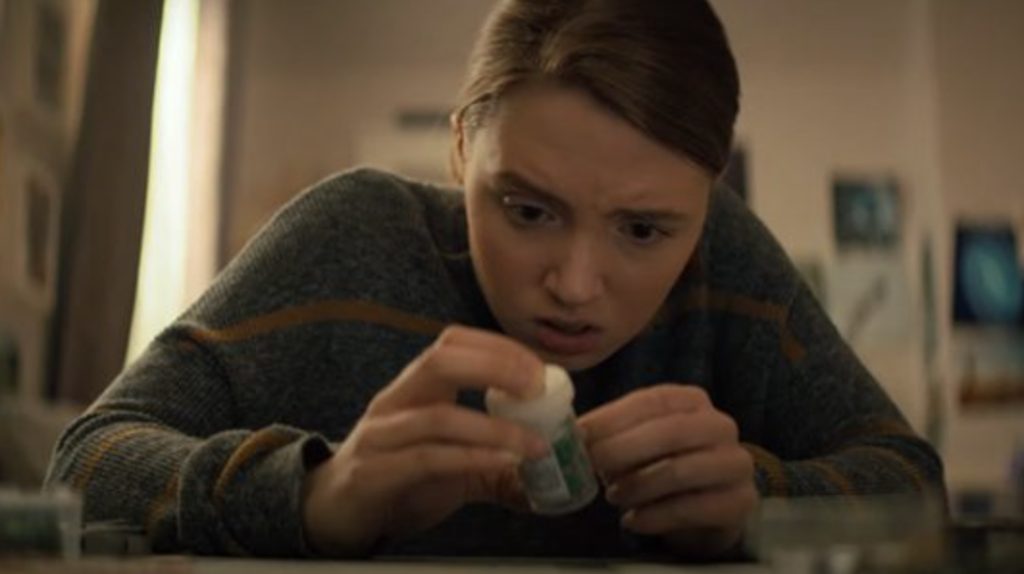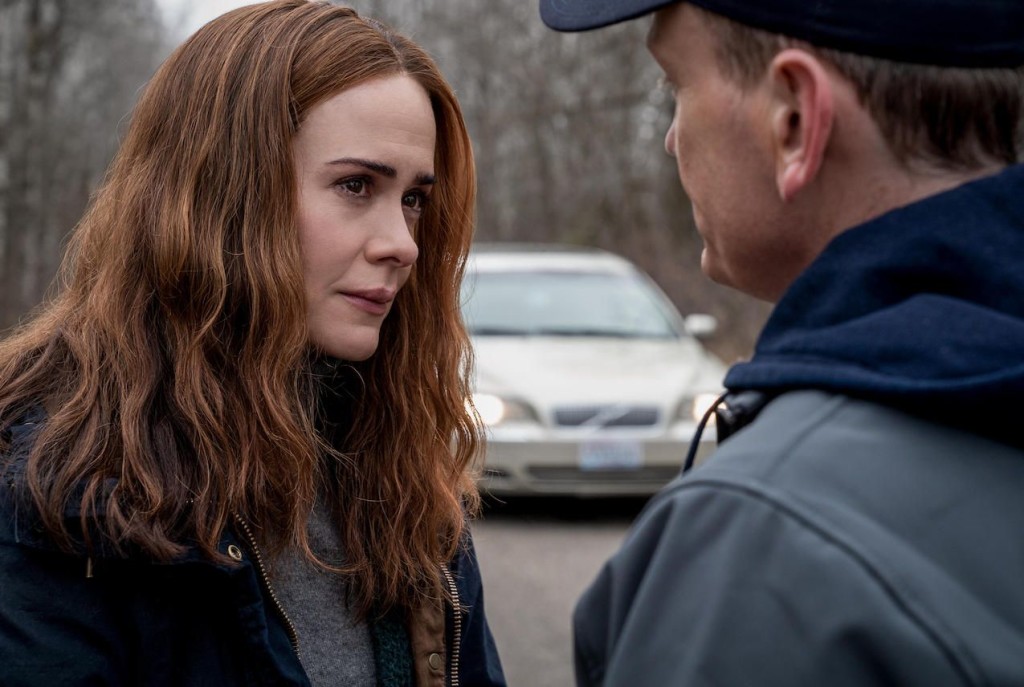Genre: Thriller
Premise: (from IMDB) A homeschooled teenager begins to suspect her mother is keeping a dark secret from her.
About: This comes from the same guys who made the really cool “all-computer-screen” thriller, “Searching.” Quick fact that shows how frustrating the transition from page to screen is: Originally, this script had a big outdoor ending sequence. However, after shooting in Winnepeg for a few weeks, one of the coldest cities in the world, they were getting some complaints from their actors about the weather and therefore had to rewrite the entire ending so it was indoors! During production! So the next time you’re struggling to come up with an ending, remember that it could be a lot worse. You could be told that the ending you spent six months perfecting needs to be rewritten one week before shooting.
Writer: Aneesh Chaganty, Sev Ohanian
Details: 90 minutes
I feel bad for these guys because, after the huge success of Searching, this was supposed to get a major theatrical push, something that’s getting harder and harder to do for a movie of this size. However, the pandemic screwed all that up like it’s screwing everything up and “Run” went to streaming instead. But hey, that’s good for us, right? We don’t have to leave our couches to catch the latest buzz-worthy flick. Let’s take a look.
Diane and her 17 year old daughter, Chloe, have a peaceful life, all things considering. Chloe is a paraplegic who must get around in a wheelchair, which has forced Diane to be a full-time carer, but the two have a strong relationship as it’s clear Diane loves her daughter more than anything.
But lately, Chloe has been restless. She’s trying to get into college but every day she races to the mail, her mom beats her to it. It’s almost as if her mom is keeping mail from her. Maybe even an acceptance letter?
In addition to this, Chloe takes a LOT of medication. All supervised by her mom of course. And she’s beginning to wonder what this stuff is. Unfortunately, she’s not allowed to use the internet or even own a smart phone. Which limits her access to information.
Therefore, Chloe must get creative and look for opportunities when mom is gone. She finally uses a trip to the movies as an opportunity to say she has to go to the bathroom. She sneaks across the street to the pharmacy to ask what this pill is she’s been taking. She learns it’s a pill that causes people to lose feeling in their legs!
Now Chloe knows the truth. Her mom is a psycho. Which means she needs to escape. But that’s easier said than done. Especially because her mom is now on high alert (she discovered Chloe at the pharmacy at the last second).
Chloe will have to figure out a way to both escape their home and make her way into town, a several-mile drive with only one road to and from. Is that possible for a girl restricted by a wheelchair? And why do we get the sense that if Chloe doesn’t escape soon, her mother is going to do something a lot worse than paralyze her?
Let me start off by saying it’s scripts like this that got me into screenwriting in the first place.
You find a fun idea then build a narrative and series of scenes that best exploit that idea. That’s what “Run” is. You have this cool thriller concept where a teenage girl begins to suspect that her mother is holding her hostage. This necessitates our goal – escape. That goal is achieved by a series of scenes – our hero trying to escape. Those are the scenes that are going to make or break your script because those are the scenes that are fulfilling (or not fulfilling) the promise of your premise.
This was always my favorite part of writing. Coming up with those scenes. Debating, after you came up with one of those scenes, whether they were good enough. Whether they were working. Whether you could come up with something better.
“Run” does a pretty good job in this department. There’s a scene around the midpoint where Chloe has been locked inside her room. After her mother leaves the house, Chloe tries to escape by going out of her second-floor window, crawling along the roof, and getting back in through a window on the opposite side. In any other movie, this would be easy. But for someone without the use of her legs, it becomes a harrowing ordeal.
When she finally gets outside the house, she tries to wheel her way into town, and runs into the mailman on the country road. After he stops, she tells him everything. Only for her mom to pull up behind the mailman and attempt to convince him that her daughter is unwell and please just hand her over. I was on the edge of my seat hoping the mailman didn’t give in. Please, for the love of God, Mailman. Don’t give in!
But something I found that’s unique about this type of hostage situation – one where our captive has a lot of freedom (as opposed to when a serial killer has their captive chained up in a basement) is that it’s hard to imagine, with 24 hours in a day, 7 days in a week, that our captive couldn’t find a way out.
We set up some rules early on that Chloe doesn’t have an iPhone. She doesn’t have internet access. Which limits her ability to find out if these pills mom is giving her are poison. So there’s this scene where Chloe literally calls a random number and asks a busy man to look up something on the internet for her. And I’m thinking to myself, “I’m not sure this scene is a) believable, or b) the most logical way to answer this question.”
It was a reminder of how shaky the foundation of this setup was. Is it really that impossible to get information? The suspension of disbelief in this script was as fragile as cheap china. You got the sense that it could be shattered with even the smallest disturbance. And that definitely affected how much I believed what was going on.
For example, there’s this scene late in the movie where Chloe poisons herself to force her mom to take her to the hospital. And, presumably, as soon as she wakes up, she’s going to tell the doctors the truth about her mom. So Chaganty and Ohanian place this medical throat restriction device on Chloe so that even when she wakes up, she can’t speak yet. So Chloe mimes to the nurse she has something to say and the nurse finally gives her a crayon and a piece of paper. Chloe is finally going to be able to tell someone what her mom is doing to her!
Yet all I could think was: You’re saying that there isn’t going to be a single other second in this hospital where she could tell them the truth? Even under the most restrictive realistic scenario, you have to think that our heroine would be able to convey that her mom is dangerous.
For a movie like this to work, you want all of these illogical pockets to be eliminated. That’s why the mailman scene was the best in the movie. There weren’t any holes in it. We felt like this is really how it would’ve gone. Yes, if a mailman saw a frantic girl in a wheelchair trying to run away, he would stop to see if she was okay. Yes, if she told him her mother was imprisoning her, he would try to get her to the police. Yes, if the mom drove up at that moment, she would lie to him to get him to hand her over. Yes, if we were that mailman, we would listen to that mother, albeit skeptically. And, most important, we knew that if the mom won this argument, our heroine was screwed. That’s a strong scene right there no matter which way you slice it.
While the believability of the set pieces was hit and miss, I loved how the writers structured their script. The challenge with structuring these “captive” movies is that even the most elaborate escape is going to take, what? 25 minutes? 30 tops? So that’s your ending. Those last 25-30 pages. What do you do in the meantime? Especially because your hero will typically want to escape by the end of the first act.
What Chaganty and Ohanian do is they use the first quarter of the script as an investigation story. Chloe suspects her mom is giving her pills that are keeping her sick. So she needs to find out if that’s true. When she finds out they are, indeed, bad, we’re a little past the end of the first act.
Again, if you start the escape now (or even the planning), you’re going to need to make it last 75 pages. That’s impossible. So Chaganty and Ohanian do something clever. They have her plan and launch an escape, only for it to fail at the midpoint (the mailman scene). This places Chloe right back in the home, except under much more dire circumstances. The ruse is up. So there’s no reason for her mom to pretend anymore. Which means Chloe is in a lot more danger. Now she REALLY has to escape.
After Chloe assesses her situation, her mom returns from getting some suspicious materials and it looks like she’s going to double down on this “making Chloe sick” stuff. The two tussle and Chloe comes up with the plan to poison herself so her mom has to take her to the hospital. And now we have our final “escape” laid out for us. This is her last chance to run away from her mother forever. Structurally sound stuff!
“Run” is one of those movies that hums more than it sings. But it still comes up with a few melodies you can’t stop humming to yourself. Like but didn’t love!
[ ] What the hell did I just watch?
[ ] wasn’t for me
[x] worth the stream
[ ] impressive
[ ] genius
What I learned: A great development for any script where your hero is held captive is the “FALSE ESCAPE” at the midpoint. Your hero does it! They successfully escape their captor! Only for, at the last possible second, the captor pulls some impossible move and captures them again, bringing them back to their prison. This not only helps you structurally. But it heightens the intensity of the second half because now the captor is enraged. They’re way more dangerous now than they were before, and escape truly feels impossible.



